Foam and poly flies
{{start}}
Flies that incorporate closed cell foam or closed cell polypropylene components have their place in almost every type of fishery and whilst most are designed as floating flies there are a few that incorporate these floating components that are designed for fishing on sinking lines.
{{end}}
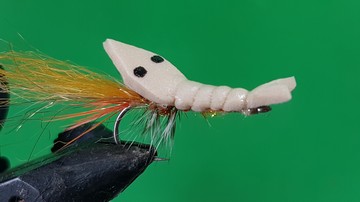
{{+1}}Foam back prawn{{-1}}
{{start}}
This fly is a floating version of my PET prawn fly and can be a real game changer and so much fun when estuary species, particularly bream and whiting, are feeding on the surface.{{end}}
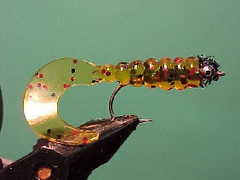
{{+1}}Cake-n-eat-it – paddle tail soft plastic{{-1}}
{{start}}
As the name implies these flies are built using a soft plastic lure body. I am happy to call this a fly because I fish it on a fly rod and fly line, cast it, retrieve it and land fish caught on it in the same way that I do when fish a traditional fly made of say fur and feather for say a brown trout in Lake Jindabyne NSW.{{end}}
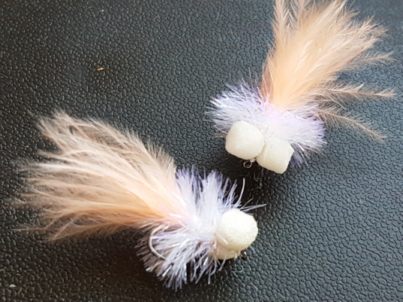
{{+1}}Booby blob{{-1}}
{{start}}
Both boobies and blobs are each tremendous search flies in their own right particularly for stocked rainbow trout. This fly presents the best of both of those worlds and has the head an tail of a booby and the body of a blob. With a little flash in the tail it's one screamer of an attractor pattern.{{end}}
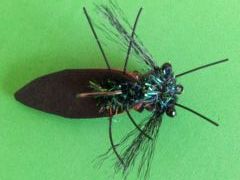
{{+1}}Foam cicada – Chatto’s ‘black prince’{{-1}}
{{start}}
This fly sits well into the surface film like the natural and has a very realistic profile when viewed from below. I have made it smaller than the natural on purpose as flies tied as big as the natural are frustratingly cumbersome to cast on #8 weight outfits that are my preference of the target species mentioned above. The fly lands with a good audible fish attracting 'plop' and with its outstretched wings that are only about half as long as the natural still wiggle with the slightest movement in a very enticing way.{{end}}
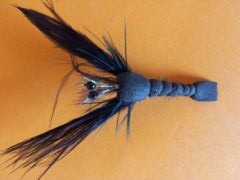
{{+1}}Floating red claw{{-1}}
{{start}}
This fly is a variation to my original yabby pattern and has been designed to be fish on a sinking line. I like to fish them, in water from 1 to 4 meters deep, either as a single fly or in a team of two flies as a point fly. If fishing them in a team I like the dropper with the second fly to be 25cm long and 1.2 meters above the point fly.{{end}}
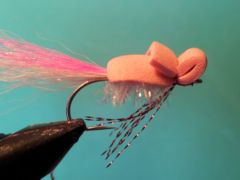
{{+1}}Gartside gurgler{{-1}}
{{start}}
Fishing with a gurgler can be very exciting because you often see the fish behind the fly just before it strikes. With fairly subtle changes you can vary this fly to fit a wide range of surface fishing situations.{{end}}
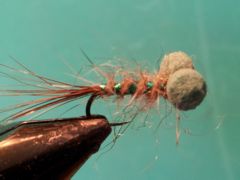
{{+1}}Hares ear booby{{-1}}
{{start}}
This is a nifty little fly that merges the hares ear nymph and the traditional booby both very high pedigree flies into one very useful loch fly. It also has a bit of flash about it which helps the fly fill an important role in my fly box for an attractor fly to use on my middle dropper when I loch style fish fish just before, through and after the trout spawning season.{{end}}
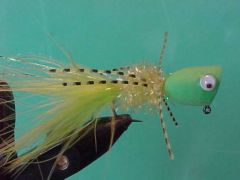
{{+1}}Popper – bass foam head{{-1}}
{{start}}
The fist and most obvious is when they are actively feeding. At those times bass can have an appetite for everything from nymphs, yabbies, small fish, shrimp, worms, lizards, frogs, grasshoppers, cicadas, beetles and for that matter almost anything that will fit in their mouth it's not surprising that a popper dropped in their line of sight and looking like something alive often gets their attention. Bass are binge feeders and are by no way picky when it comes to feeding time.{{end}}
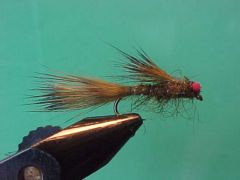
{{+1}}Eucumbene damsel – Chatto’s original{{-1}}
{{start}}
This is my favourite damsel fly imitation and ticks all the boxes. It is quite representational of an emerging damsel with its overall form and function and has a neat little hot spot in the form of the red eyes. It's a great fly to fish at any time when there are midge or damsels around as most importantly the trout love it.{{end}}














